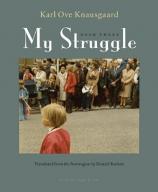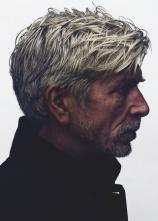Reading Group Guide
Discussion Questions
My Struggle: Book 3

1. At the beginning of Book 3, Knausgaard thinks all the way back to his very first memories. He covers everything he can remember from the first six years of his life in just one paragraph. What are your earliest memories? Why do you think Knausgaard waited until Book 3 to go back to the very beginning of his life?
2. Early on in this volume, Knausgaard writes that “memory is pragmatic, it is sly and artful, but not in any hostile or malicious way; on the contrary, it does everything it can to keep its host satisfied.” What do you think Knausgaard means by memory’s “host”? How might memory be “sly” and “artful” (but not “malicious”)? How do you feel that Knausgaard’s experiences writing a gigantic six-volume book about his life affected his relationship to his own memories?
3. Knausgaard fills Book 3 with incidents that paint his father as a tyrant --- for instance, the time when Karl Ove is afraid to tell his father that the milk on his cereal has gone sour. Or when Karl Ove is terrified of revealing to his father that he lost a sock during swim practice. Why is he so terrified of upsetting his father in any way? Why does his father demand such obedience? How do you see this childhood trauma manifesting itself in Karl Ove’s relationships and behaviors as an adult in Books 1 and 2?
4. Think of all the little details Knausgaard describes in this book: For instance, the poster of the Kawasaki 750 motorcycle on the wall in his friend’s room, going to the Fina station to buy Fox and Nox, the music Karl Ove plays, the things he is given as gifts, the clothes he and his family wear. How do all these details work to build a portrait of middle-class Norwegian life in the 1970s? What sort of childhood is Knausgaard trying to present by painting his world this way?
5. The scene in which Karl Ove must wear a girl’s swimming cap to swim lessons is among many scenes in Book 3 that paint him as an effeminate boy. They also form part of a larger theme in all three volumes, wherein Knausgaard repeatedly brings up ways in which he feels that he has been feminized by the modern world. Do you find that these admissions contradict the “bad boy” image that he at other times paints of himself? Do you find that these scenes add another layer of complexity to his character, and that they make him seem more vulnerable and sympathetic as a person? And how are Karl Ove’s father’s reactions to these feminine tendencies yet another source of stress for their relationship?
6. In many ways, Karl Ove’s childhood is reminiscent of virtually anyone’s: For instance, in Book 3 he describes things like the first day of school, car trips to see his relatives, the first girl he has a crush on, and being grounded. Why is it important that Knausgaard describe experiences that will be familiar to most of his readers? And how does he talk about these memories so that they are recognizably his own, despite being common parts of a middle-class childhood?
7. Book 3 contains lengthy descriptions of Karl Ove and his friend Geir defecating in the woods. Such in-depth descriptions of bowel movements have long been taboo for novelists, and they were in fact long considered too controversial to publish at all. Why do you think descriptions of our feces have proven so distressing to the guardians of society’s morals, and why do you think Knausgaard chose to break this taboo? How might such a subject be appropriate to a book that largely deals with the innocence and experiences of childhood?
8. As a child, Karl Ove tends to imagine scenarios where people who have angered him get their just deserts. He even goes so far as to imagine his own death, which he says “was generally a sweet thought at that time” because people like his father would feel regret for hurting him. Do you think of young Karl Ove as the kind of child who would have these feelings? Do you find that he still thinks like this as an adult? Do you think it’s possible that writing MY STRUGGLE is a way of dealing with these feelings of resentment toward people who have wronged him?
9. During his description of his first crush, on Anne Lisbet, Knausgaard tries to convey the feeling of youthful discovery by writing that “everything was happening for the first time.” What do you think he means by this? In what ways is childhood special because everything feels new? How does this compare with Knausgaard’s depiction of adulthood? What new feelings do we experience as adults that we don’t know about as children?
10. What sorts of activities and relationships dominate Knausgaard’s childhood? What things do you remember best about your childhood? Are they similar to or different from Knausgaard’s? Why do you think that is?
11. Even though MY STRUGGLE is the story of Knausgaard’s life, he has chosen to call these books “novels.” This makes sense, because nobody could possibly remember all the childhood details that Knausgaard presents in Book 3, so he’s obviously fictionalizing to an extent. How do you feel about the fact that Knausgaard is probably inventing a lot of the childhood details in Book 3? Do you think we all do this when remembering our childhoods? Does an author have license to invent in this way from time to time? How would things be different if someone who was a child now --- with all our recording devices --- chose to write his or her childhood story 40 years from now?
12. Describing trips to his grandparents’ house, Knausgaard writes, “history didn’t exist for me when I went there as a child.” What do you think he means by this? What things do you think young Karl Ove’s grandparents represented for him? In what ways would his grandparents’ home be very different from his own home with his parents on the island? Did you feel like this when you visited your relatives?
13. Knausgaard describes multiple trips with Geir to the trash dump, where they have strange encounters unlike any others in the book. For instance, one time they come upon some men shooting rats; another time they go in search of pornography and end up trying to stick their penises into old glass bottles. How is the dump different from any of the other places Karl Ove regularly goes as a child? Why do you think he and Geir like to go there? What sort of different rules does the dump have from the rest of their lives? Is it important to have places like this to go as a child? Do children have places like this nowadays?
14. It’s quite clear that Karl Ove’s relationship with his mother is very different from the one he has with his father. What is your image of his mother? Do you think his mother and his father are well suited to each other? Why do you think they married?
15. Throughout Book 3, Knausgaard paints a very negative portrait of his father. Did you find that he portrayed anything admirable about him? Do you feel that Karl Ove’s father was happy with his life --- his marriage, his job, his children, his achievements? How might this relate to Knausgaard’s own determination to succeed as an adult?
16. Knausgaard lists many of the books he read as a child; it’s a remarkably long list, and it seems like he just read and read, regardless of subject matter or genre. Why do you think he read so compulsively? What did the books offer him that he didn’t get at home? Do you think all this reading was indicative of the gift for language that he would nurture later in life? What role did books play in your own childhood?
17. How does Karl Ove’s life change when he moves on to secondary school? In what ways is this the beginning of the end of his childhood? Do you think major changes --- like a change in school or job or residence --- tend to occur in sync with the beginnings and ends of major periods in your own life story? Why or why not?
18. Book 3 covers a lot of similar material to that of the other books: Karl Ove’s relationship with his father, romantic encounters with the opposite sex, his experiences with his friend Geir and his brother Ygnve. How are these themes different, given that Book 3 is about Karl Ove’s childhood? Did you find Karl Ove’s story more interesting as a child or as an adult? Did you find that Knausgaard’s method of storytelling was different in this book? Did he use different words? Different structures? A different perspective?
19. At the end of Book 3, what parts of Karl Ove’s life remain to be told? What particular struggles do you think he has yet to face? At this point, what part of Karl Ove’s life has been the most difficult? The happiest? The most meaningful?
My Struggle: Book 3
- Publication Date: May 27, 2014
- Genres: Literary, Nonfiction
- Hardcover: 432 pages
- Publisher: Archipelago
- ISBN-10: 1935744860
- ISBN-13: 9781935744863







